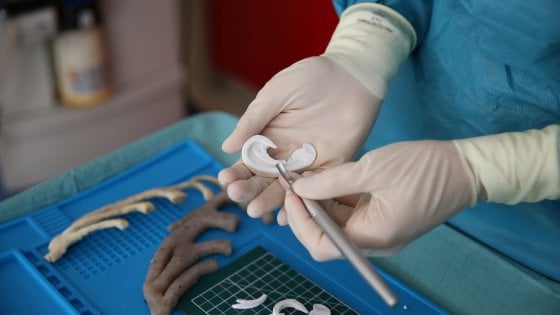Surgeries at the Meyer Children’s Hospital in Florence have built a child’s ear thanks to 3D printing: this is the first case in Italy
A new frontier in reconstructive surgery. In Florence, Meyer Children’s Hospital surgeons have exploited the potential of 3D printing to alleviate the distress of a child as young as 13 years old. The young patient was suffering from microtia, a very rare congenital malformation (affecting an average of 5 children out of 10 thousand) that inhibits the development of the earcup. To remedy this condition, Meyer’s doctors decided to resort to technology. In this case, the enormous potential of 3D printing. Starting from the costal cartilage of the same child, in fact, the surgeons “printed” a three-dimensional ear that was then implanted on the head of the child. The operation required the collaboration of surgeons and engineers from the T3Ddy laboratory of the Department of Industrial Engineering of the University of Florence. First, the doctors detected the shape of the patient’s cartilage using Tac. The data were loaded into a software that elaborated an accurate three-dimensional model. In order to precisely define the shape that the earcup should have had, a 3D scan was carried out and an ear of the young patient’s mother was also modeled. The advantage of such an operation compared to those performed with the previous 2D technique, is in fact the extreme precision that has allowed to minimize the cartilage taken from the coasts of the child. Thanks to 3D printing, the graphic processing obtained by the engineers “took shape” and the doctors were able to enter the operating room.
The first ear “built” with 3D printing
The 3D-printed model of the earcup was used by surgeons in the operating room to shape cartilage and achieve an aesthetically pleasing ear. This is the first operation in Italy that uses technology and 3D printing. “For a child with a malformation that was so evident, the aesthetic recovery acquires great psychological and social value – comments the head of the surgical team Flavio Facchini, specialist in Plastic and Reconstructive Surgery – he had no hearing problems, but the malformation created great discomfort. Beyond the benefits for the little patient, this intervention marks a decisive step forward in the history of reconstructive medicine and surgery in Italy. The use of 3D printing, in this specific case, concerns an ear but the applications are potentially infinite. Using this same technology, for example, they can be used to correct facial malformations, congenital alterations of the head-neck district, the results of traumas and burns and the results of demolishing oncological interventions. “The technique we applied – comments Dr. Facchini – represents the future of surgery: the 3D models allow to plan the surgery and to adapt, with a precision that was unthinkable with 2D techniques, the reconstructive model to the individual patient”.
